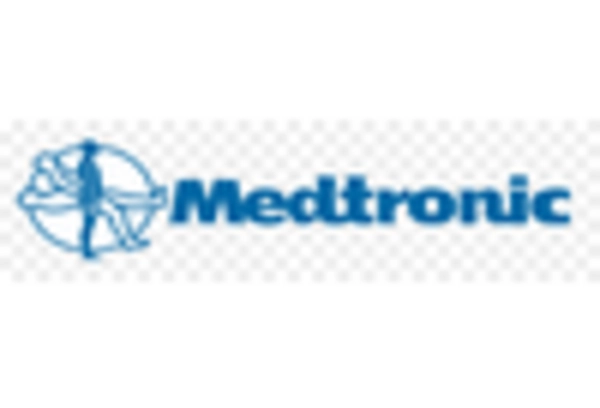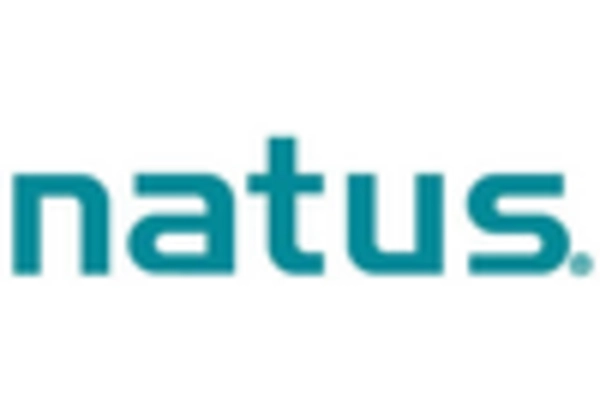Increased Healthcare Expenditure
The rising healthcare expenditure in South Korea is a pivotal factor influencing the neonatal intensive-care market. Government and private sector investments in healthcare have seen a steady increase, with spending reaching approximately 8.1% of GDP. This financial commitment is reflected in the expansion of neonatal care facilities and the procurement of advanced medical equipment. As healthcare budgets grow, hospitals are better positioned to enhance their neonatal intensive-care units, thereby improving the quality of care for newborns. The neonatal intensive-care market stands to benefit from this trend, as increased funding allows for the implementation of best practices and the adoption of innovative technologies that can significantly impact patient outcomes.
Advancements in Medical Technology
Innovations in medical technology are transforming the neonatal intensive-care market in South Korea. The introduction of cutting-edge equipment, such as high-frequency oscillatory ventilators and advanced monitoring systems, enhances the quality of care provided to critically ill newborns. These technologies not only improve survival rates but also reduce the length of hospital stays, which is a significant consideration for healthcare facilities. The market is witnessing a shift towards more sophisticated solutions that enable real-time monitoring and data analysis, thereby facilitating timely interventions. As hospitals adopt these advancements, the neonatal intensive-care market is likely to experience substantial growth, driven by the demand for improved patient outcomes and operational efficiencies.
Growing Awareness of Neonatal Health
There is a burgeoning awareness of neonatal health issues among the South Korean population, which is driving demand for specialized care. Parents and healthcare professionals are increasingly recognizing the importance of early intervention and quality care for newborns, particularly those at risk. This heightened awareness is likely to lead to more proactive healthcare-seeking behavior, resulting in increased admissions to neonatal intensive-care units. Educational campaigns and community outreach programs are further contributing to this trend, emphasizing the need for specialized neonatal care. Consequently, the neonatal intensive-care market is expected to expand as healthcare providers respond to the growing demand for high-quality services tailored to the needs of newborns.
Regulatory Support for Neonatal Care
Regulatory frameworks in South Korea are increasingly supportive of advancements in neonatal care, which is a significant driver for the neonatal intensive-care market. The government has implemented policies aimed at improving maternal and child health, including guidelines that promote the establishment of specialized neonatal units. These regulations encourage hospitals to invest in the necessary infrastructure and training to provide optimal care for newborns. As compliance with these standards becomes essential, healthcare facilities are likely to enhance their neonatal intensive-care capabilities. This regulatory support not only fosters a conducive environment for market growth but also ensures that the quality of care provided to newborns meets established benchmarks.
Rising Prevalence of Premature Births
The increasing incidence of premature births in South Korea is a critical driver for the neonatal intensive-care market. Recent statistics indicate that approximately 7.5% of live births in the country are preterm, necessitating specialized care. This trend is likely to escalate demand for neonatal intensive-care units (NICUs) equipped with advanced technology and skilled personnel. As healthcare providers strive to improve outcomes for these vulnerable infants, investments in neonatal care facilities are expected to rise. The neonatal intensive-care market is thus positioned for growth, as hospitals expand their capabilities to accommodate the needs of premature infants. Furthermore, the emphasis on reducing neonatal mortality rates aligns with the growing awareness of the importance of specialized care, potentially leading to increased funding and resources allocated to NICUs.

















Leave a Comment